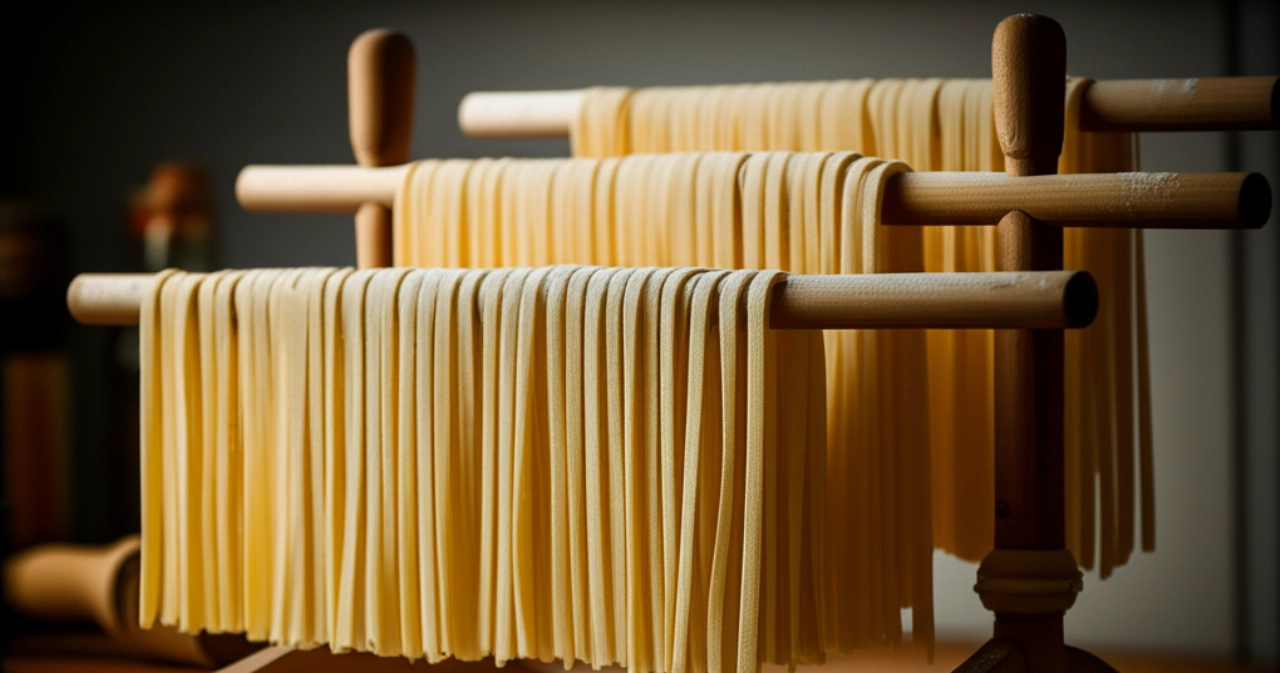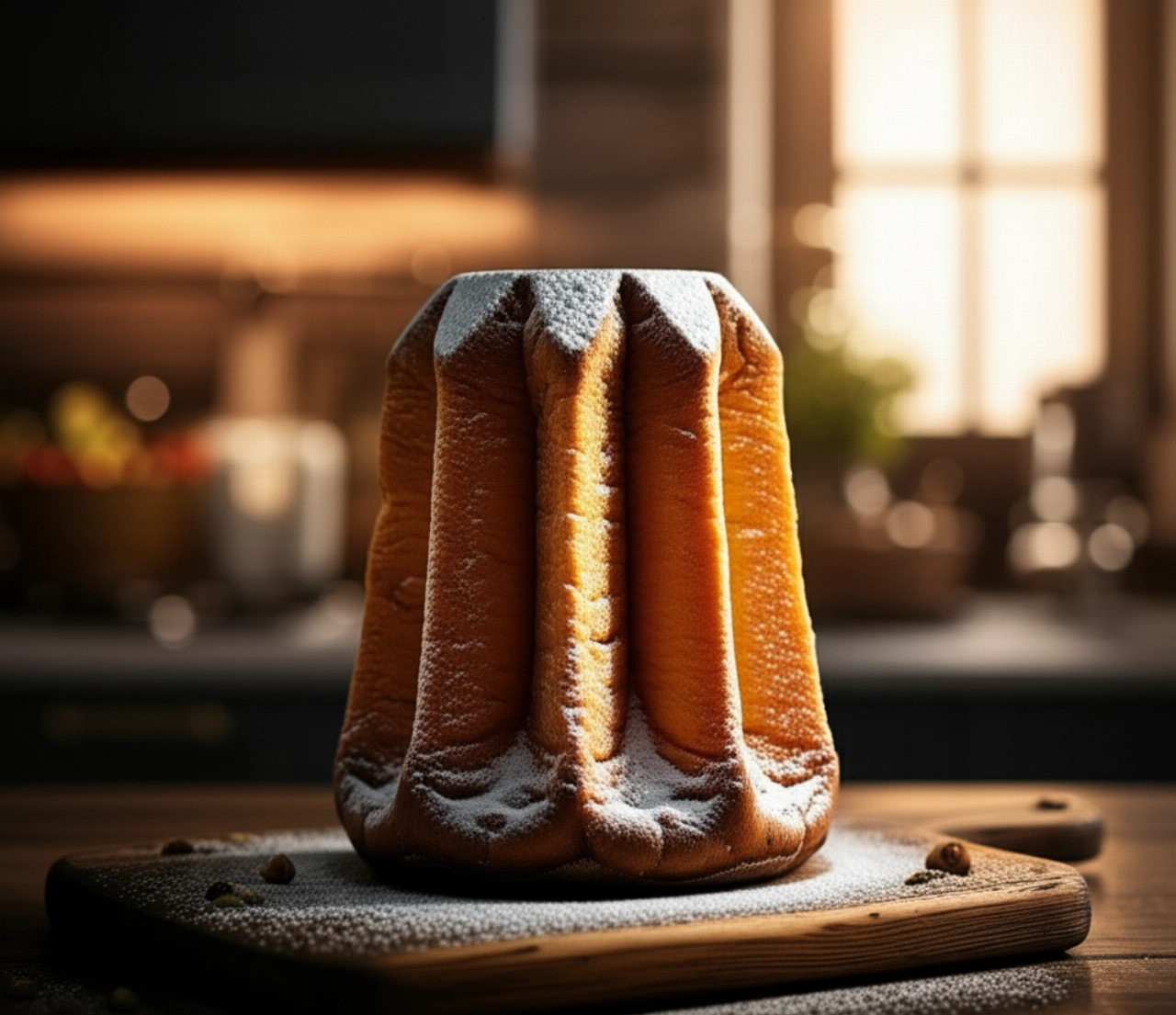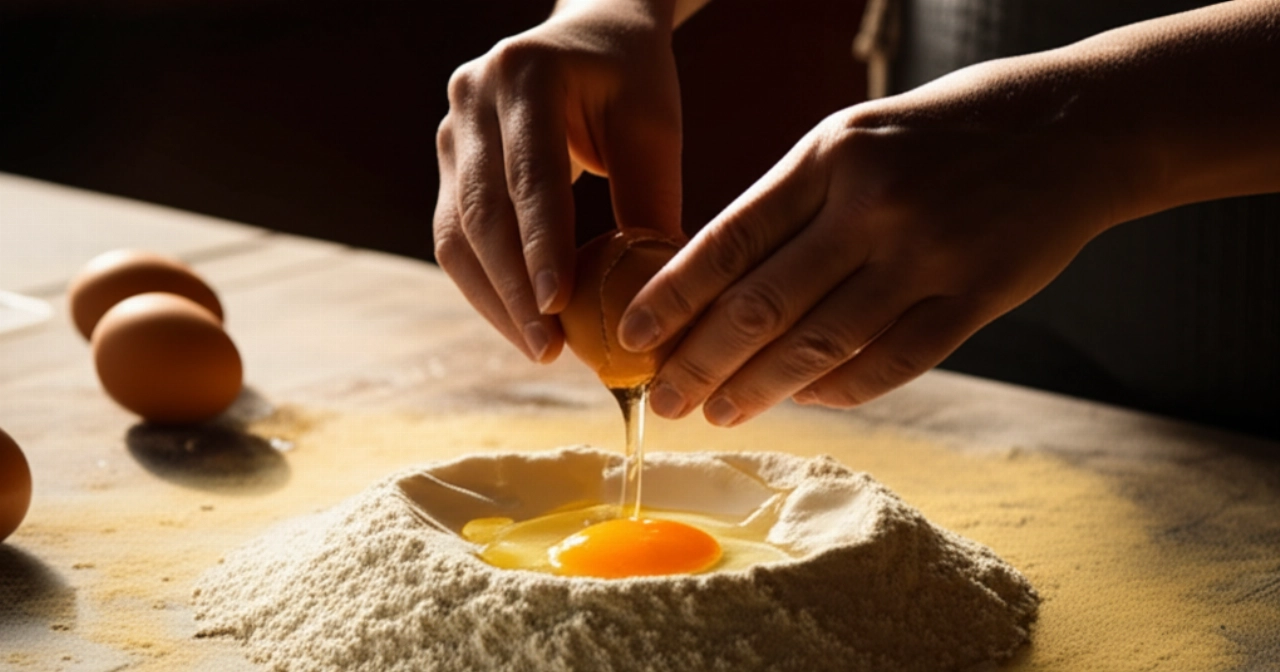Dreaming of bringing a plate of homemade tagliatelle to the table, with that rough and porous pasta dough that perfectly embraces the sauce? That feeling of authenticity, of tradition passed down from generation to generation, is within reach.
But how many times have you tried, and the pasta dough broke, came out too thick, or the tagliatelle stuck together during cooking? Finding the right recipe, one that guarantees success, seems like a challenge. Don't worry, you're in the right place.
Make yourself comfortable. On this page, you won't just find a list of ingredients, but the definitive guide, full of tricks and tips, to prepare the best homemade Tagliatelle of your life. Success is guaranteed, and the satisfaction of enjoying a dish made with your own hands will be priceless.

The Strategic Pillar: Perfect and Foolproof Pasta Dough
Our promise is clear: no more pasta dough that breaks or doesn't hold up during cooking. I'll guide you step by step to get tagliatelle that are smooth, porous just right, and absorb sauce like no other, using the traditional method that will make you feel like a true pasta maker. The secret lies in the consistency and elasticity of the dough, and I'll reveal how to achieve them effortlessly.

Smart Ingredients: The Choice That Makes a Difference
For tagliatelle, the fewer ingredients there are, the more crucial their quality becomes. Here's what you need and why:
- 00 Flour: This is the base. 00 flour has a low gluten content, which makes it perfect for an elastic but not too "gummy" pasta dough. For a more rustic and firm dough, you can use 70% 00 flour and 30% durum wheat semolina, but for beginners, 00 flour is ideal.
- Very Fresh Eggs: They are the soul of egg pasta. Use large (about 60-65g each) and very fresh eggs, preferably at room temperature. The classic ratio is 1 egg for every 100g of flour. Eggs not only bind the dough but also give color, flavor, and an unmistakable texture to the pasta dough.
- A pinch of salt: It's not strictly necessary for the structure, but it enhances the pasta's flavor. Just a pinch, no more.
Grandma's tip: If the eggs are small or the flour is particularly dry, you might need a teaspoon of water to achieve the right consistency. But add it drop by drop!

Mistakes to Avoid: Steer Clear of Common Pitfalls
Making pasta at home is simple, but there are some pitfalls that can compromise the result. Here's how to avoid them:
- Not respecting the proportions: A dough that's too dry will be difficult to work with and will break. One that's too wet will be sticky and won't hold its shape. Remember: 1 large egg per 100g of flour is the golden rule.
- Kneading too little: The dough needs to be worked for a long time (at least 10-15 minutes by hand) to develop the gluten, which will give elasticity to the pasta dough. If you don't work it enough, the pasta will be fragile and will break.
- Not letting the dough rest: After kneading, the dough ball must rest, wrapped in plastic wrap, for at least 30 minutes at room temperature. This allows the gluten to relax and the dough to become more elastic and easier to roll out. Skipping this step is a fatal mistake!
- Rolling the pasta dough too thick: Tagliatelle should be thin, almost transparent. If the pasta dough is too thick, they will be gummy and heavy. Tradition dictates that you should be able to read through it!
Grandma's Secret: The Touch That Makes Pasta Dough Perfect
My grandma, when she made pasta, always used to say: "The pasta dough must be like a baby's skin: smooth and soft to the touch, but with its own resistance." Her secret? Patience in kneading and a little trick for rolling it out. After rolling out the dough, she would let it "dry" for 5-10 minutes in the air before cutting it. This allowed it to lose a bit of surface moisture, making it easier to roll up and cut without sticking, and ensuring perfect cooking.
Let's Prepare Homemade Tagliatelle Together: The Step-by-Step Guide
Ingredients:
- 400g 00 flour
- 4 large eggs (approx. 60-65g each)
- A pinch of salt
Tools:
- Pastry board or large work surface
- Fork
- Rolling pin (or pasta machine)
- Sharp knife or pasta cutter wheel
- Plastic wrap
Method:
- Prepare the well: On the pastry board, pour the flour into a mound, creating a well in the center. Add the pinch of salt.
- Add the eggs: Break the eggs one by one into the central well of the flour.
- Start kneading: With a fork, gently beat the eggs, gradually incorporating the flour from the inner edges of the well. Proceed calmly to prevent the eggs from spilling out.
- Work the dough: When the dough starts to come together and the fork is no longer useful, begin kneading with your hands. Work vigorously for at least 10-15 minutes, pushing the dough with the palm of your hand and folding it over itself. The dough should become smooth, elastic, and homogeneous. If it's too sticky, add a pinch of flour; if it's too dry, a drop of water (but very little!).
- Let it rest: Form the dough into a ball, wrap it tightly in plastic wrap, and let it rest at room temperature for at least 30 minutes (an hour is also fine). This step is crucial for elasticity!
- Roll out the dough (by hand): Lightly flour the pastry board. Take a piece of dough (about a quarter of the total) and start rolling it out with a rolling pin, starting from the center and pushing towards the edges. Rotate the dough occasionally and lightly flour to prevent sticking. The goal is to obtain a very thin, almost transparent sheet, round or rectangular in shape. Tradition dictates that you should be able to read a newspaper through it!
- Roll out the dough (with a pasta machine): If using a machine, divide the dough into 3-4 pieces. Slightly flatten a piece and pass it through the widest roller setting. Fold the dough in half, pass it through again. Repeat 2-3 times. Then, gradually reduce the thickness of the rollers, passing the dough through each setting until you reach the desired thickness (usually the second to last or last for tagliatelle).
- Let it dry slightly: Once the dough is rolled out, let it rest on the floured pastry board for 5-10 minutes. This little grandma's trick will make it easier to cut.
- Cut the tagliatelle: Lightly flour the dough. Gently roll the dough onto itself (without squeezing too tightly) forming a roll about 5-7 cm wide. With a sharp knife or a pasta cutter wheel, cut strips about 0.5-0.7 cm wide.
- Open the tagliatelle: Gently unroll the freshly cut tagliatelle and arrange them on a floured tray or a pasta drying rack. Let them dry for about 30 minutes before cooking. If you're not using them immediately, they can stay air-dried for a few hours or be frozen.
- Cooking: Cook the tagliatelle in plenty of boiling salted water for 2-4 minutes, depending on the thickness and degree of drying. Drain them al dente and immediately dress them with your favorite sauce, perhaps a classic Bolognese ragù!
Tips and Frequently Asked Questions about Homemade Tagliatelle
- Can I use only semolina flour? You can, but the pasta dough will be tougher and less elastic. For tagliatelle, 00 flour or a mix with a small percentage of semolina is ideal for softness and porosity.
- Why does my pasta dough break when I roll it out? Most likely, the dough is too dry or hasn't rested enough. Make sure you've kneaded it for a long time to develop the gluten and that you've respected the resting times.
- Can I prepare the dough in advance? Yes, you can prepare the dough and store it wrapped in plastic wrap in the refrigerator for up to 24 hours. Before rolling it out, let it return to room temperature for about 30 minutes.
- How can I freeze tagliatelle? Once cut, arrange the tagliatelle on a floured tray without overlapping them and freeze them. Once frozen, you can transfer them to food bags. Cook them directly from frozen in boiling water.
- What's the best sauce for tagliatelle? Tagliatelle are perfect with a classic Bolognese ragù, but they also pair very well with mushroom sauces, white meat sauces, or simple butter and sage. Their porosity makes them ideal for absorbing any type of condiment!
Your Masterpiece is Ready!
There you have it! Now you no longer just have a recipe, but all the secrets to bring a dish to the table that tastes of home, tradition, and love. The satisfaction of preparing fresh pasta with your own hands is a unique emotion, and with this guide, the result will always be impeccable.
Don't be afraid to experiment. Cooking is an act of creativity and a way to pamper those you love. But start from this solid base and you'll see that applause won't be lacking. Prepare your favorite ragù and enjoy the aroma that will fill your kitchen!
Have you tried our recipe? We're very curious to see your masterpiece! Leave a comment below, tell us how it went, or share a photo on Instagram tagging @CercaRicette.it. If you loved these tagliatelle, you can't miss our recipe for the perfect Bolognese Ragù or for another fresh pasta like Ricotta and Spinach Ravioli.





